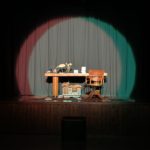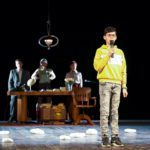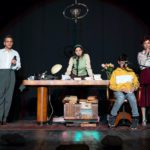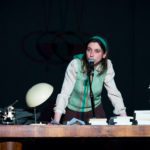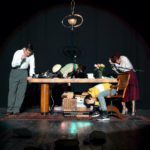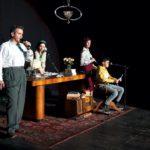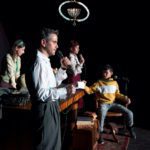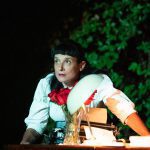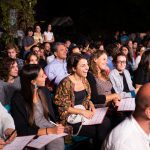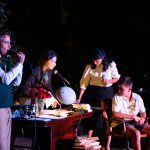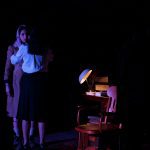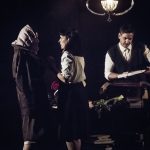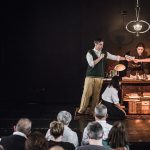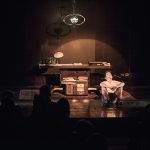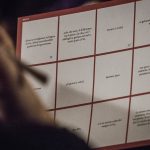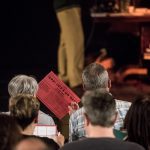[gæp] What is a GAP?
[gæp] WHAT IS A GAP?
Playful Dialogue on Liberation
In [gæp] What is a GAP? a modern-day child relates with the visions, thoughts and actions of Pin: the bratty, vagabond boy protagonist of The Path to the Spider’s Nests, Italo Calvino’s first novel, set during the Resistance among the partisans in the Ligurian mountains.
The development of the performance stems from Calvino’s anti-rhetorical intuition, whose novel is elaborated in such a way as to be able to enter into dialogue with the young protagonist, who finds himself putting himself at stake in the first person by conducting a veritable “literary game” with the spectators.
The child throws himself into a time jump to involve the audience in a game of analogies around The Path to the Spider’s Nests in which one wins by catching missing lines and hidden meanings. The treatment starts from the playful dimension – which a child knows well and within which he can move with ease – to focus precisely on those aspects capable of resonating with his imagination, his thoughts and the first questions that arise in childhood around the meaning of his being in the world and his positioning with respect to the actions and language of adults.
Between mysterious words and restless souls, the show starts from the gaze of the young Pin to reach the audience through that elementary drive that leads every human being to fight to stop being humiliated, travelling along the paths of revolt to give birth to autonomous images and thoughts that each spectator composes in his or her own secret space: in that part of himself or herself where he or she keeps that “secret wound to redeem which we fight for”.
In 2022, a new version of the play made its debut, reworked in the run-up to the centenary of Calvino’s birth celebrated in 2023, with a new cast that sees in the role of Pin the young Ahmed, born in Bologna to Tunisian parents, whose relationship with the partisan story prompts further leaps in imagination.
Credits
Elaboration and scenic composition: Fiorenza Menni
Text elaboration and game composition: Andrea Mochi Sismondi
With: Rossella Dassu, Eugenia Delbue, Ahmed Lejri and Andrea Mochi Sismondi
Music by: Hazina Francia e Vincenzo Scorza
Costumes by: Federica de Pascalis
Graphic design: Diego Segatto
Organisation and promotion: Tihana Maravic and Laura Firenze
Administration: Greta Fuzzi
Technical direction: Giovanni Brunetto and Vincenzo Scorza
Produced by: Ateliersi in collaboration with Agorà
Supported by: MiC, Regione Emilia-Romagna and Comune di Bologna
Thanks to the collaboration with: Freak Andò – Antiquariato Modernariato Design, Biblioteca Italiana delle Donne, APS Libertà era Restare e Modo Infoshop.
Photo Gallery
Press Release
- “Un gioco dentro al gioco” Enrico Piergiacomi su Liminateatri
- “L’arte praticata: cos’è un GAP!” Silvia Napoli su Il Manifesto
- “CENTO FASCISTI KAPUT, IL GIOCO DELLA RESISTENZA. INTERVISTA CON ATELIERSI”, Emma Pavan per GAP! su Bologna Teatri, 29 maggio 2019
- Michele Pascarella, Cos’è un GAP? Note sulla feroce tombola calviniana di Ateliersi, Gagarin Orbite Culturali, 19 aprile 2022



